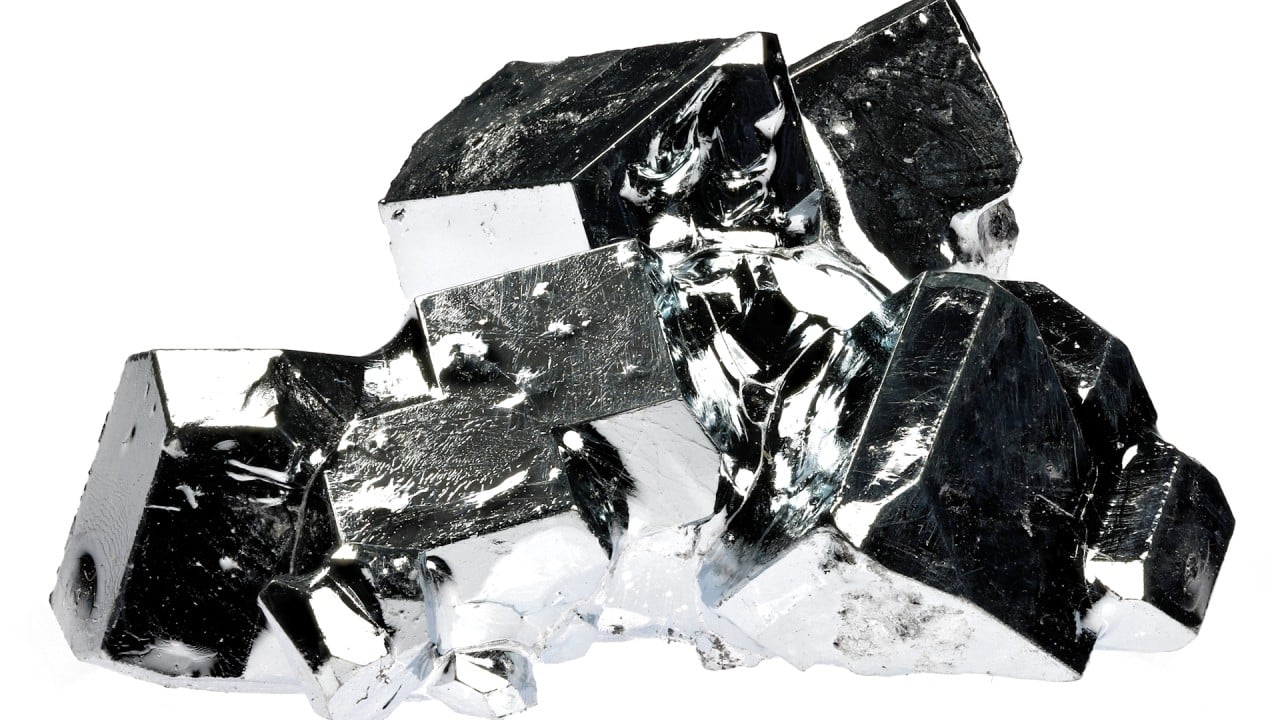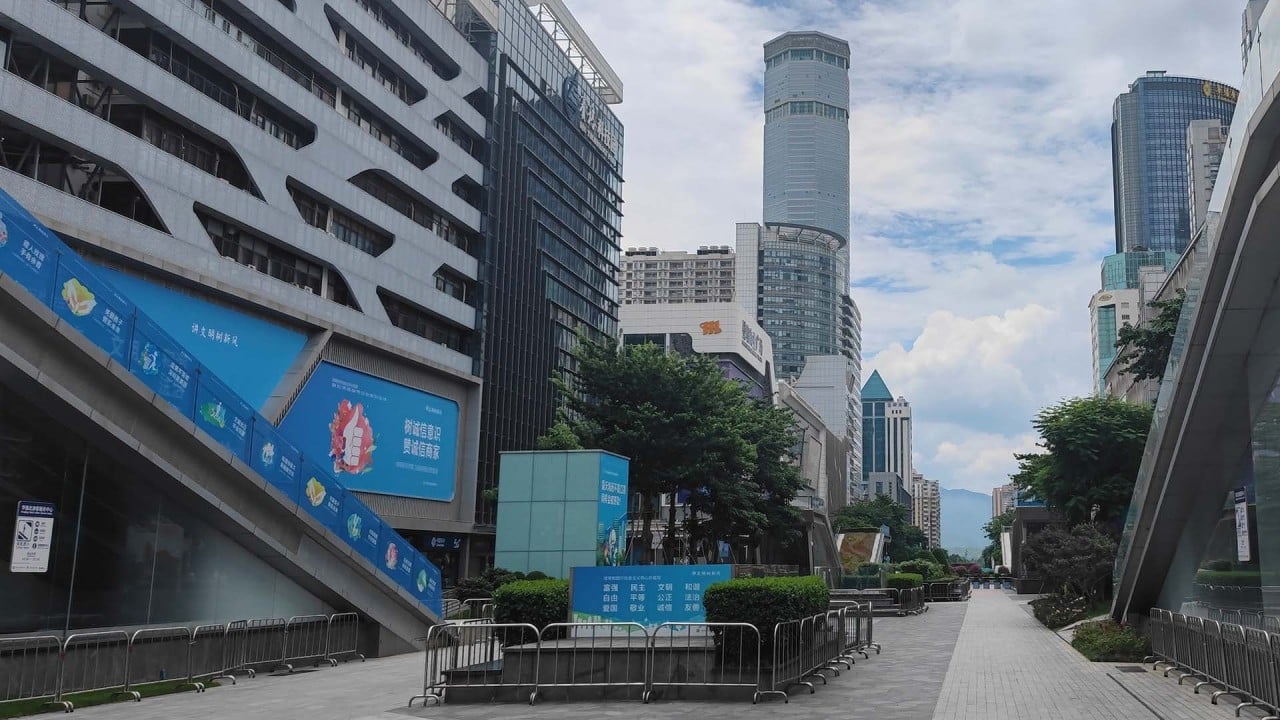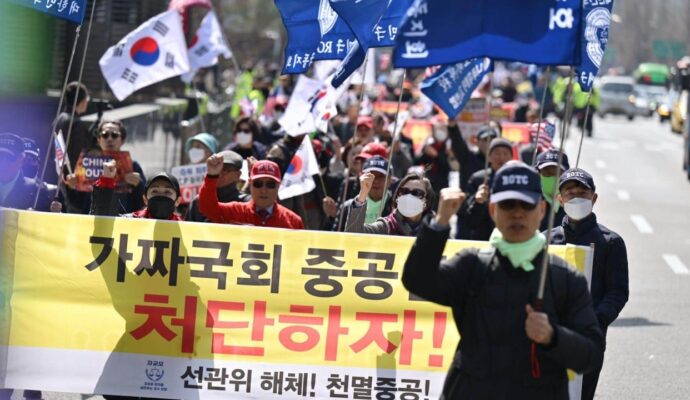Widening gaps in economic power and a shifting international industrial landscape were among the “largest” catalysts for the growing discord between the three countries, analysts said.
Ties are likely to become even more fraught when China moves further up global value chains and challenges the status of Japan and South Korea, they said.
As China rapidly upgraded its hi-tech sector, Chinese market share and profits for Japanese and South Korean products began to decline, Zhu Feng, executive dean of the School of International Studies at Nanjing University, said.
That was one of the primary factors sending China’s relations with both countries into “a new phase of tensions”, he said.
“Now the [Japanese and Korean] business community is again turning towards the US, considering investments in the US as more important than those in China.”
Also, the United States’ “full-scale suppression” of China had left no leeway for Tokyo and Seoul to balance economic and diplomatic ties with the two rival powers, Zhu said.
Ironically, the economic rise of Japan, South Korea and China followed similar trajectories.
All three successively created their own growth miracles following the end of World War II, through similar state-led, industrial policy-driven and export-oriented paths.
Each progressed from labour-intensive to innovation-intensive sectors, with some low-value-added industries, such as assembly and processing, moving first from Japan to South Korea and then on to China, highlighting the close linkages between the three economies.
However, that also led to a high degree of overlap in their industrial and export structures, sparking competition and strategic jockeying in the global value chain.
South Korea dethroned Japan as the world’s largest display producer in 2004, just five years after taking over as the No 1 shipbuilder. In the 1990s and 2000s, led by tech giants Samsung and SK Hynix, South Korea beat Japan in the memory chip race and now holds over half of the global market share.
However, a four-year trade dispute with Tokyo, which formally ended only last month, exposed South Korea’s dependence on Japanese equipment and materials for advanced chip-making, and the challenges it faced in overtaking Japan in the value chain.
Again, China unseated Japan as the world’s No 2 economy in 2010, a feat widely viewed as having sparked a structural change in bilateral relations.
In the first quarter of 2023, China surpassed Japan as the world’s top auto exporter on the back of rising demand for new energy vehicles.
The bilateral economic cooperation model had gone from “vertical” to “horizontal”, Chinese ambassador to Japan Wu Jianghao told business representatives in Tokyo last month.
He was referring to a shift from an upstream-downstream hierarchy in the supply chain to a mode where countries with similar development levels trade similar goods.
Such tensions have recently become more evident in China-South Korea trade, with Beijing now the largest source of trade deficit for South Korea.
South Korea recorded a surprise overall trade surplus in June, its first in 16 months, but it was still a ninth straight month of deficit with China, according to Korean official data.
As recently as 2021, South Korea would record sizeable annual surpluses with China – its top trading partner.
Noticeable increases in imports from China have included fibres, machinery, computers, automotive batteries and even semiconductors, sectors where South Korea long held an advantage.
Korean products also continue to lose ground globally to China-made alternatives.
Kang Jun-young, professor of Chinese studies at Hankuk University of Foreign Studies in Seoul, said South Korean firms’ loss of technological competitiveness had led to difficulties in trade and business with China.
This makes long-term changes in the structure of the trade relationship “inevitable”, he said.
“There was declining demand for intermediate goods supplied by Korea as exports to China decreased in the aftermath of the global economic downturn and China’s zero-Covid policy,” Kang said, referring to Beijing’s strict anti-pandemic measures involving mass lockdowns and border controls.
“A more fundamental reason is that as China’s technological prowess increased, some goods could now be substituted.”
According to Cho Young-nam, professor of international area studies at Seoul National University, China and South Korea had shifted from being “complementary partners” to “competitive rivals” with regard to their economies, and this had contributed to the current “fragile” state of bilateral ties.
“[Over the past three decades], the gap in national power between South Korea and China has been widening,” Cho told the 11th World Peace Forum (WPF) in Beijing earlier this month.
“This is the largest picture and the most important factor affecting the Korea-China relationship.”
The nearly US$18 trillion Chinese economy last year, according to World Bank data, dwarfed South Korea’s by more than tenfold – a far cry from a gulf of merely 20 per cent in 1992, when the two countries established formal relations.
The difference is stark in military spending as well. From being virtually identical three decades ago, Beijing’s military expenditure had ballooned to more than six times that of Seoul last year, figures from the Stockholm International Peace Research Institute showed.
“Against such a backdrop, the ‘China threat theory’ has spread in South Korea,” Cho said.
President Yoon Suk-yeol is leading a drive to diversify Korean trade away from China and build “supply chain alliances”, especially with regard to advanced semiconductor chips.
During a state visit to Washington in April, Yoon said Seoul would further strengthen economic alignment with the US under its Chips and Science Act and Inflation Reduction Act. South Korea and Japan are also members of the US-led Indo-Pacific Economic Framework for Prosperity.
All three initiatives aim to build supply chain resilience by reducing sourcing from China and contain its rising influence.
Yang Bojiang, director of the Institute of Japanese Studies at the Chinese Academy of Social Sciences, also said the China-South Korea relationship was “more fragile than before” as Beijing overtakes South Korea as world leader in many industries.
Addressing the same WPF panel as Cho, Yang said: “How to … strive to reconstruct structurally complementary relationships and find new bright spots for cooperation is … a fundamental yet extremely important issue.”
South Korean companies operating in China saw sales shrink by about 13 per cent from 2016 to 2022 – but the figure rose to about 40 per cent if batteries and semiconductors were excluded, data from Korean business research firm CEO Score earlier this month showed.
In 2021, China ended Korea’s 17-year reign as the world’s largest display manufacturer. After overtaking it as the world’s largest shipbuilder in 2010, China now has also begun to chase Korean players in high-added-value vessels like liquefied natural gas (LNG) carriers.
In May, Seoul announced a 66 trillion won (US$51.7 billion) investment plan to recapture the No 1 spot in the global display market by 2027.
However, in a wide range of key sectors apart from shipmaking and displays – such as petrochemicals, home appliances and memory chips – Korean exports are likely to face stiff competition from China in the second half of 2023, the Korea International Trade Association (KITA) said, citing Chinese technological advances, policy support and pricing edge.
Also, with growing demand for electric vehicles, Korean dependence on imports from China for rechargeable batteries and related raw materials will continue to increase, which is “structurally constraining” the trade balance with Beijing, the business group warned in a report late last month.
“[It is] imperative to diversify the supply chain as soon as possible”, the report said.
Samsung pulled out of China’s mobile phone market in 2019 and moved production to Vietnam, amid fierce competition with local rivals and rising labour costs.
Korean car brands, led by Hyundai and Kia, saw their market share in China shrink from nearly 10 per cent a decade ago to a mere 1.4 per cent in May, according to the China Association of Automobile Manufacturers.




